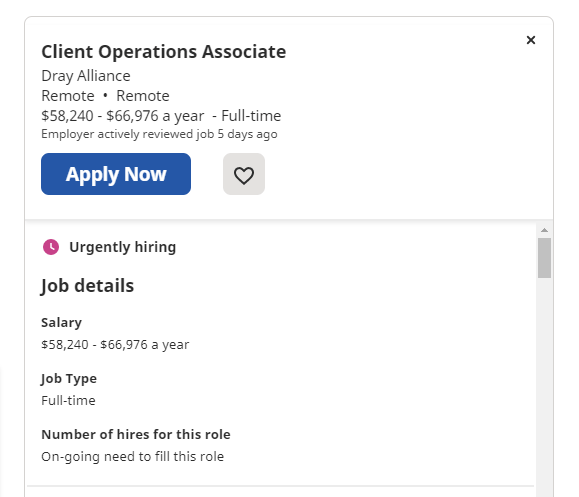Comments
- No comments found

Becoming a digital nomad used to be reserved for tech gurus and travel bloggers — until 2020 happened, forcing millions of people to change course.
From switching to telework to changing roles to switching careers completely, it’s no secret the pandemic led to a massive global economic shift.
While the pandemic still isn’t over yet, its worldwide impact has led people to question their futures, lifestyle choices, and priorities.
Some even attribute the pandemic to the start of The Great Resignation we’re seeing today — a prediction of a mass, voluntary exodus from the workforce.
The good news? Anyone can become a digital nomad these days. In fact, with careful planning and attention to detail, you can become a digital nomad by 2022.
In this article, we’ll break down exactly how to become a digital nomad in seven easy steps.
Ready to take the first step? Let’s get to it.
You can’t start your life as a digital nomad without having a remote job first.
When considering which job to go for, make sure to choose the right role for you.
For instance, if you loathe secretary work, stay away from virtual assistant positions. If mentoring, coaching, and teaching aren’t for you, stay away from online tutoring positions.
To help you decide which route to take, first make a list of freelance job options. Then, make a list of part-time and full-time job options.
Here’s an example to help you get started:
Freelance role options:
Consultant
Content writer
Copywriter
Data scientist
Developer (coder, programmer)
Digital marketer
Editor
Graphic Designer
Publicist
SEO strategist
Social media marketer
Translator
Tutor/Teacher
Virtual assistant
Part-time and Full-time options:
Accountant
Administrative assistant
Bookkeeper
Customer service rep
Data entry clerk
HR rep or HR manager (apply through a PEO company)
Logistics specialist
Market researcher
Operations associate or operations director
Paralegal
Project manager
Receptionist
Recruiter
Sales associate

Then, make a list of priorities, goals, financial needs, skills, and career must-haves.
Here’s an example:
My work must be accessible from anywhere in the world
My pay must be at least $40,000 a year
I need a job that allows me to design my own schedule
I’m skilled at typing quickly, writing copy, designing for brands, and project planning
Paid time off, flexible vacation time, and health insurance are must-haves
Once you’ve narrowed down your priorities and what roles you’d like to apply for, use platforms like Indeed, LinkedIn, WeWorkRemotely, and Remote OK to find jobs. If you choose to go the copywriting or content writing route, head to Contena.co or ProBlogger to find jobs.
After landing your first job, make sure to ask your hiring manager what digital and physical tools you’ll need to perform your job well.
For instance, you might need to invest in:
A strong laptop (consider buying a second one as backup)
A laptop stand
A VPN to work securely from anywhere in the world (check out Express VPN)
An HD camera
Good headphones
Portable Wi-Fi
Virus protection software
Having the right tools is essential to preventing daily frustrations and performing your job as best as possible.
Start considering where you’d like to go once you have a job and the tools you need to perform it.
Are you craving a European coastal vibe? Are you dreaming about exploring wildlife in Africa? Is the Amazon Rainforest calling your name?
Make a list of each place you’d like to cross off your list, like this:
A coastal town in Croatia or South Africa
Brazil
Canada
Fiji
Hungary
New Zealand

Then, decide how long you’d wish to stay in each place. Are you interested in hopping around every two months? Or would you prefer a six-month stay or longer?
Then, be sure to conduct ample research for each destination.
When researching, look for answers to the following questions for each destination:
Is there a digital nomad visa in that country? If so, what’s the process?
Do you have to apply for a travel visa, or will your current passport do?
How long can you legally stay?
What’s the process for applying for a travel visa, short-term visa, or long-term visa?
What rules and customs should you be aware of? For instance, Covid rules, religious rules, interesting laws, cultural norms, etc.
If you’re taking a pet, find out pet laws, necessary medical exams, travel carrier dimensions, and transportation options (can the pet ride with you in cabin? Or does it need to go via cargo? Is there a pet quarantine period?)
After you’ve conducted thorough research, make another list that shows:
Your desired destinations
Your research results for each destination
Potential pros and cons for each destination
Destinations that may need to be removed from the list (due to culture conflict, bad overall fit, or difficulty obtaining visas)
Once all of that is finished, make a final list showing the exact destinations you’re going to visit, how long you’re going to stay, and what logistics you need to take care of for each one.
At this point, you have a job, the necessary tools to perform it, and a destination plan.
The next step is taking care of the logistics needed to bring that destination plan to life.
Here’s a checklist to help you bring your plan to fruition:
Book your flight, accommodation, and transportation for each destination (make sure everything is pet friendly if you’re bringing a pet)
Notify your credit card and debit card companies that you’ll be traveling soon (include dates and locations)
Make sure you have easy access to emergency funds or a savings account
If you’re renting, notify your landlord that you’ll be leaving soon
If you have a mortgage, put your house up for rent or for sale
Figure out what you’re going to do with your belongings (sell, ship, donate, pack, and/or store your belongings)
If you’re bringing a pet, arrange their medical exams, vaccinations, and transportation
Book your travel insurance and make sure it covers any health needs you have or might encounter
Notify loved ones that you’re leaving and host a bon voyage party

When you travel to or live in a new country, you’re bound to run into culture shock at some point.
Culture shock is any feeling of confusion, anxiety, or uncertainty you may experience when you’re in new surroundings. While culture shock is normal when you’re in unfamiliar territory, it can feel pretty uncomfortable.
You may experience sadness, longing, homesickness, loneliness, or a full host of emotions. You may even question your digital nomadic existence entirely.
To help you cope through an array of emotions, it’s important to learn everything you can about culture shock.
It also helps to:
Radically accept that other cultures are different than your own
Embrace other cultures for what they are (don’t try to impose your own ideas on them)
Find a way to create your own little “nest” wherever you are
Have easy access to a coach, counselor, or mental health resource
Learn and practice coping and self-soothing tools before you travel
Note: It’s also important to prepare yourself for reverse culture shock when you visit your home country. After being on the road for a while, reverse culture shock can feel just as intense as culture shock does.
You may be surprised to see who keeps up with you and who doesn’t as you navigate your nomadic journey.
If there are any loved ones you absolutely want to keep in touch with, it’s important to create a communication plan to make it happen.
A communication plan doesn’t have to be a long-winded document. It’s just a plan you and your loved ones can count on to keep in contact with each other.
For instance, if you’re going to be in Spain for a while and your loved ones are in Texas, you’ll need to plan around time zone differences. Will you be in bed by the time they get off work? If so, make a plan to chat on a Saturday or Sunday. Or try hopping on a brief video call during your lunch break.

It’s also important to discuss any fears you may have with loved ones before you head out. Are you worried you may lose a relationship due to long-distance? Be honest with them about your concerns.
Then, ask them for tips and advice on how to keep in touch — and be sure to ask them how they’re feeling too. Having an open, honest conversation is essential to being on the same page.
In the end, you may need to accept that some relationships may change due to lifestyle choices and worldviews. But with dedication and a plan, you’ll still be able to nurture some of your relationships for years to come.
Being in a new place can feel pretty lonely — even when you’re surrounded by majestic beauty or a furry friend. It can even feel lonely when you bring your partner and kids with you.
After all, your immediate family can’t replace the community, friends, and family you left back home.
While being far away from loved ones can be hard to swallow, making new friends helps.
Whether it’s meeting a new mom at a beach yoga circle or finding a trio of besties in a Facebook group, making new friends acts as a healing balm when you’re lonely.
When meeting new people, be prepared for some cultural differences. Your new friend Anita may not be fond of you talking about religion if she’s an atheist. Your new friend Matt may show up two hours late to your party if his culture doesn’t worship being on time.
It’s also important to allow time for new friendships to flourish — something that can be difficult if you’re not staying long. If you’re just passing through, it helps to be honest about the reality of new friendships.
For instance, some new friendships may last only an evening, a week, or a month. Some new friendships may turn into online besties, while others turn into lifelong bonds.
If you meet someone you’d like to keep in touch with long-term, be sure to communicate that to them.
Whatever the case may be with your new friends, stay open and accept that friendships unfold in various ways.
Leave your comments
Post comment as a guest